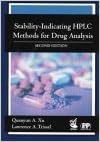Step-by-Step Guide to Regulatory Compliance for Photostability Testing Under ICH Q1B
Introduction
Photostability testing evaluates the impact of light exposure on pharmaceutical products to ensure they remain safe, effective, and visually acceptable throughout their lifecycle. The International Council for Harmonisation (ICH) guideline Q1B provides a comprehensive framework for conducting photostability testing. This step-by-step guide explores the requirements for regulatory compliance under ICH Q1B, detailing practical strategies to ensure effective implementation.
Understanding ICH Q1B
The ICH Q1B guideline focuses on photostability testing for new drug substances and products. It outlines standardized protocols to determine light-induced degradation and establishes
- Identifying Photodegradation Pathways: Analyzing how light affects the product’s physical and chemical properties.
- Ensuring Packaging Adequacy: Evaluating the effectiveness of packaging in protecting against light exposure.
- Supporting Regulatory Submissions: Providing stability data for product registration.
Example: Photostability testing ensures
that light-sensitive drugs like antihistamines or biologics maintain their integrity under typical storage and transportation conditions.Step 1: Define Photostability Testing Objectives
Establish clear objectives for photostability testing based on the product’s characteristics and intended use. Common objectives include:
- Determining if the active pharmaceutical ingredient (API) is light-sensitive.
- Evaluating the effects of light on the final drug product, including excipients and packaging.
- Ensuring compliance with regulatory requirements for product registration.
Tip: Include testing early in development to guide formulation and packaging decisions.
Step 2: Select Testing Materials
Photostability testing involves both the drug substance and the drug product. Ensure the following materials are included:
- Drug Substance: Assess the API’s sensitivity to light.
- Drug Product: Evaluate the final formulation, including excipients and packaging.
Tip: Use the final container-closure system for accurate evaluation of packaging protection.
Step 3: Set Up Light Exposure Conditions
ICH Q1B specifies light sources and exposure levels to simulate real-world conditions. Key parameters include:
- Light Source: Use a combination of visible light (cool white fluorescent lamps) and UV light (near-UV lamps).
- Exposure: Provide an overall illumination of not less than 1.2 million lux hours and a UV energy exposure of not less than 200 watt-hours/m².
Tip: Calibrate light sources regularly to ensure consistent exposure levels.
Step 4: Conduct Testing
Photostability testing involves exposing the product to light and evaluating its stability. Key steps include:
- Sample Preparation: Place samples in clear containers to maximize light exposure.
- Exposure Setup: Position samples at a uniform distance from the light source.
- Controls: Include dark controls to differentiate light-induced changes from other degradation pathways.
Tip: Maintain environmental conditions such as temperature and humidity during testing to avoid confounding factors.
Step 5: Analyze Results
Post-exposure analysis is critical for interpreting photostability testing data. Evaluate the following:
- Physical Changes: Assess appearance, color, and clarity.
- Chemical Stability: Measure assay, impurities, and degradation products using validated analytical methods.
- Packaging Effectiveness: Test the ability of the container-closure system to protect against light.
Tip: Use high-performance liquid chromatography (HPLC) and spectroscopy for detailed chemical analysis.
Step 6: Address Packaging Requirements
Packaging plays a crucial role in protecting light-sensitive products. Evaluate the following:
- Opaque Containers: Use materials that block or significantly reduce light transmission.
- Secondary Packaging: Include light-resistant overwraps or cartons for added protection.
- Labeling: Clearly state storage conditions, such as “Store in a light-resistant container.”
Tip: Conduct compatibility studies to ensure the packaging materials do not interact with the product.
Step 7: Document Findings for Regulatory Submissions
Thorough documentation is essential for demonstrating compliance with ICH Q1B. Include the following in your submission:
- Testing protocols, including light sources, exposure levels, and sample preparation.
- Complete datasets with observations of significant changes.
- Justifications for packaging and storage recommendations.
Tip: Use electronic systems to maintain accurate and accessible records for regulatory review.
Challenges in Photostability Testing
Implementing photostability testing under ICH Q1B can present challenges, including:
- Resource Intensity: Requires specialized equipment and expertise.
- Data Complexity: Managing large datasets from photostability studies can be overwhelming.
- Regulatory Variability: Differences in regional interpretations of ICH Q1B may require additional studies.
Solution: Partner with experienced contract research organizations (CROs) to streamline testing and data management.
Best Practices for Compliance
To ensure compliance with ICH Q1B, adopt the following best practices:
- Plan Early: Incorporate photostability testing into the initial stages of product development.
- Validate Methods: Use validated analytical techniques to ensure reliable results.
- Leverage Technology: Invest in advanced equipment for accurate light exposure and data analysis.
- Engage Regulators: Maintain open communication with regulatory agencies to clarify requirements and address concerns.
- Document Thoroughly: Maintain detailed records of protocols, results, and deviations for regulatory submissions.
Conclusion
Compliance with ICH Q1B for photostability testing ensures that pharmaceutical products remain safe and effective under light exposure. By following the steps outlined in this guide, leveraging advanced technologies, and adopting best practices, manufacturers can successfully navigate the regulatory landscape and deliver high-quality medicines to patients worldwide. As the pharmaceutical industry continues to evolve, adherence to photostability testing guidelines will remain a critical component of global drug development and approval processes.

